Chapter: Mechanical : Fluid Mechanics And Machinery : Fluid Properties and Flow Characteristics
Important Answers and Solved Problems: Fluid Properties and Flow Characteristics
FLUID
PROPERTIES AND FLOW CHARACTERISTICS
PART – A
1. Define
fluids.
Fluid may be defined as a substance which is
capable of flowing. It has no definite shape of its own, but confirms to the
shape of the containing vessel.
2. What are the properties of ideal fluid?
Ideal fluids have following properties i)It is incompressible
ii) It has
zero viscosity
iii) Shear
force is zero
3. What are
the properties of real fluid?
Real fluids have following properties i)It is compressible
ii) They are
viscous in nature
iii) Shear
force exists always in such fluids.
4. Explain the Density
Density
or mass density is defined as the ratio of the mass of the fluid to its volume.
Thus mass per unit volume of a fluid is called density. It is denoted by the
symbol (ρ).
Density =
Mass of the fluid (kg) / Volume of the fluid (m3)
5. Explain the Specific weight or weight density
Specific weight or weight density of a fluid is
the ratio between the weight of a fluid to its volume. Thus weight per uint
volume of a fluid is called weight density and is denoted by the symbol (W).
(W) =
Weight of the fluid / Volume of fluid
= Mass x Acceleration due to gravity / Volume
of fluid
W = pg
6. Explain the Specific volume
Specific
volume of a fluid is defined as the volume of the fluid occupied by a unit Mass
or volume per unit mass of a fluid is called specific volume.
Specific
volume = Volume / Mass = m3 /kg = l/p
7. Explain the Specific gravity
Specific gravity is defined as the ratio of weight
density of a fluid to the weight density of a standard fluid. For liquid,
standard fluid is water and for gases, it is air.
Specific
gravity = Weight density of any liquid or gas Weight / density of standard
liquid or gas
8.Define Viscosity.
It is defined as the property of a liquid due to
which it offers resistance to the movement of one layer of liquid over another
adjacent layer.
9. Define kinematic viscosity.
It is
defined as the ratio of dynamic viscosity to mass density. (m²/sec)
10. Define Relative or Specific viscosity.
It is the ratio of dynamic viscosity of fluid to dynamic
viscosity of water at 20°C.
11. State Newton's law of viscosity and give
examples.
Newton's law states that the shear stress ( ) on a fluid
element layer is directly proportional to the rate of shear strain. The
constant of proportionality is called co-
efficient
of viscosity.
r
= μ du
/ dy
12.
Give the importance of viscosity on fluid motion
and its effect on temperature.
Viscosity is the property of a fluid which offers resistance
to the movement of one layer of fluid over another adjacent layer of the fluid.
The viscosity is an important property which offers the fluid motion.
The viscosity of liquid decreases with increase in
temperature and for gas it Increases with increase in temperature.
13.
Explain the Newtonian fluid
The fluid
which obeys the Newton's law of viscosity i.e., the shear stress is directly
proportional
to the rate of shear strain, is called Newtonian
fluid. r
= μ du
/ dy
14. Explain the Non-Newtonian fluid
The fluids which does not obey the Newton's law of viscosity
i.e., the shear stress is not directly proportional to the ratio of shear
strain, is called non-Newtonian fluid.
15. Define compressibility.
Compressibility
is the reciprocal of bulk modulus of elasticity, k which is defined as the
ratio of compressive stress to volume strain.
k = Increase
of pressure / Volume strain
Compressibility
= 1 / k = Volume of strain / Increase of pressure
16. Define surface tension.
Surface tension is defined as the tensile force acting on the
surface of a liquid in Contact with a gas or on the surface between two
immiscible liquids such that contact surface behaves like a membrane under
tension.
17.
Define Capillarity.
Capillary is a phenomenon of rise or fall of
liquid surface relative to the adjacent general level of liquid.
18. What is cohesion and adhesion in fluids?
Cohesion is due to the force of attraction between
the molecules of the same liquid. Adhesion is due to the force of attraction
between the molecules of two different Liquids or between the molecules of the
liquid and molecules of the solid boundary surface.
19. State momentum of momentum equation?
It states that the resulting torque acting on a
rotating fluid is equal to the rate of change of moment of momentum.
20. What is momentum equation
It is based on the law of conservation of momentum
or on the momentum principle It states that,the net force acting on a fluid
mass is equal to the change in momentum of flow per unit time in that
direction.
21. What is Euler's equation of motion
This is the equation of motion in
which forces due to gravity and pressure are taken into consideration. This is
derived by considering the motion of a fluid element along a stream line.
22. What is venturi meter?
Venturi meter is a device for
measuring the rate of fluid flow of a flowing fluid through a pipe. It
consisits of three parts.
a. A short converging part b. Throat c.Diverging part. It is
based on the principle of Bernoalli's equation.
23. What is an orifice meter?
Orifice meter is the device used
for measuring the rate of flow of a fluid through a pipe. it is a cheaper
device as compared to venturi meter. it also works on the priniciple as that of
venturi meter. It consists of a flat circular plate which has a circular sharp
edged hole called orifice.
24. What is a pitot tube?
Pitot tube is a device for
measuring the velocity of a flow at any point in a pipe or a channel. It is
based on the principle that if the velocity of flow at a point becomes zero,
the pressure there is increased due to the conversion of kinetic energy into pressure
energy.
. What are the types of fluid flow?
Steady & unsteady fluid flow Uniform & Non-uniform
flow
One dimensional, two-dimensional & three-dimensional flows
Rotational & Irrotational flow
25. State the application of Bernouillie’s
equation ?
It has the application on the following measuring
devices.
1.Orifice meter.
2.Venturimeter.
3.Pitot tube.
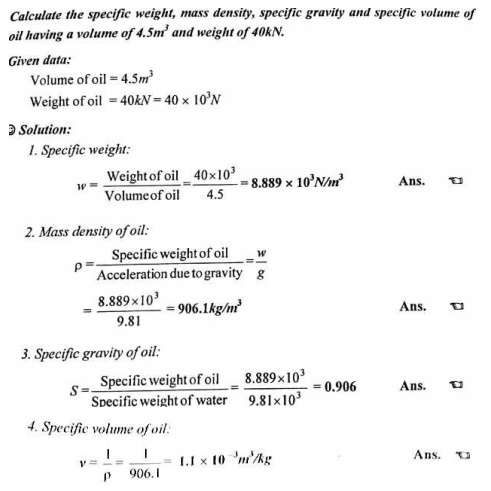
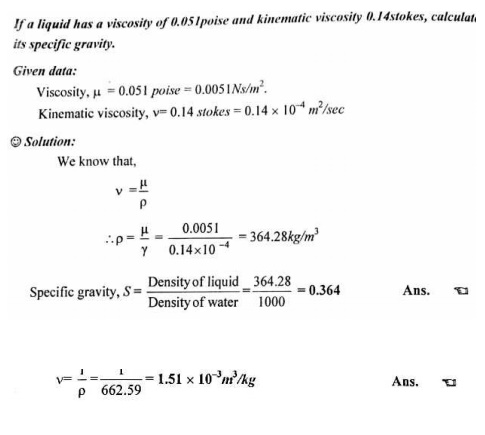
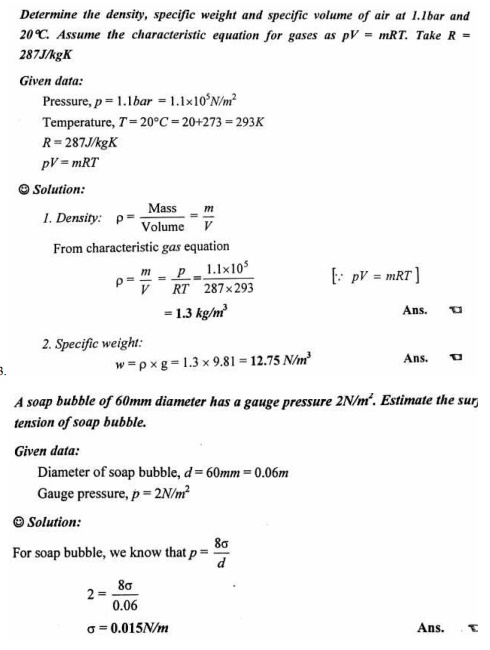
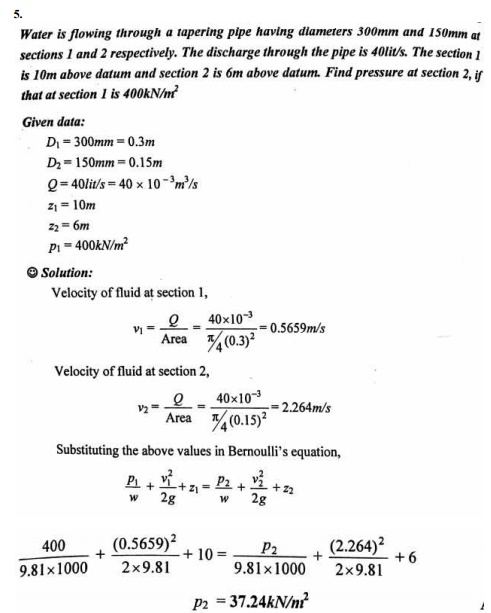
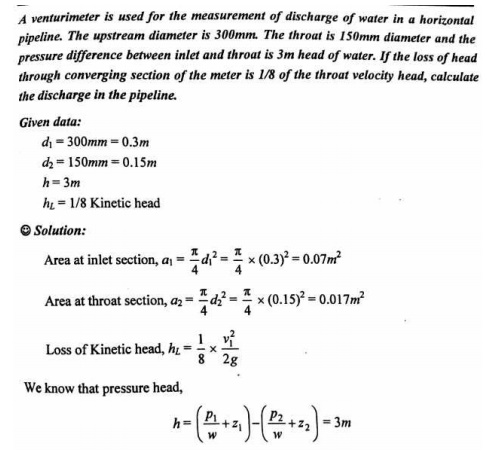
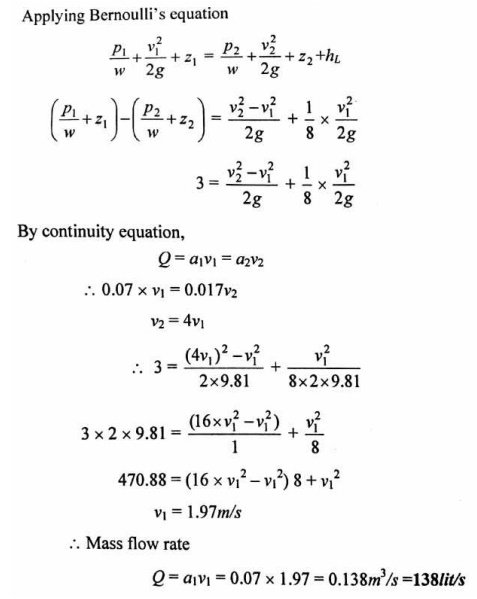
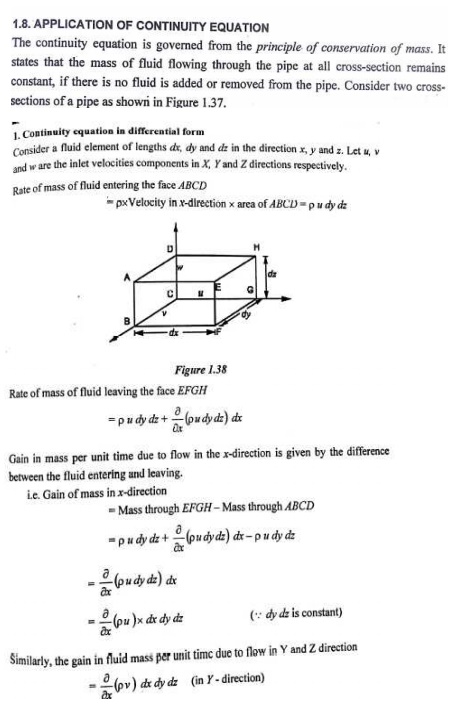
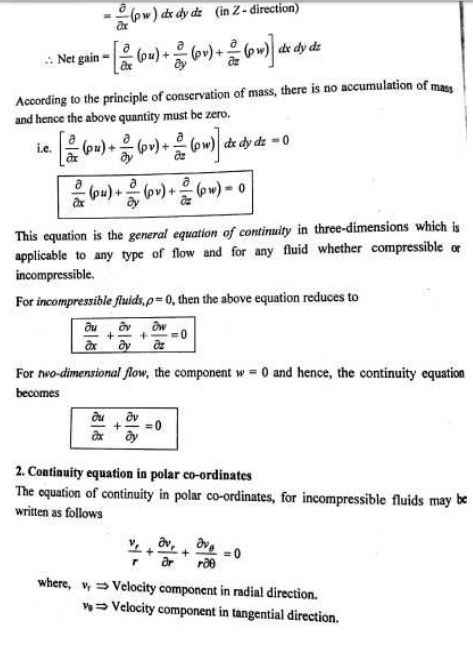
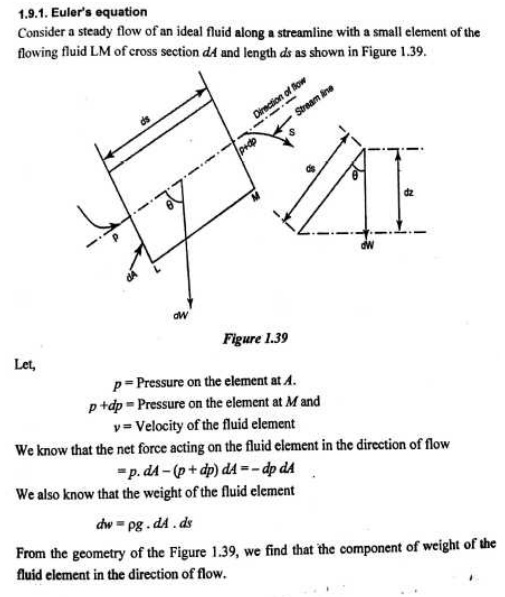
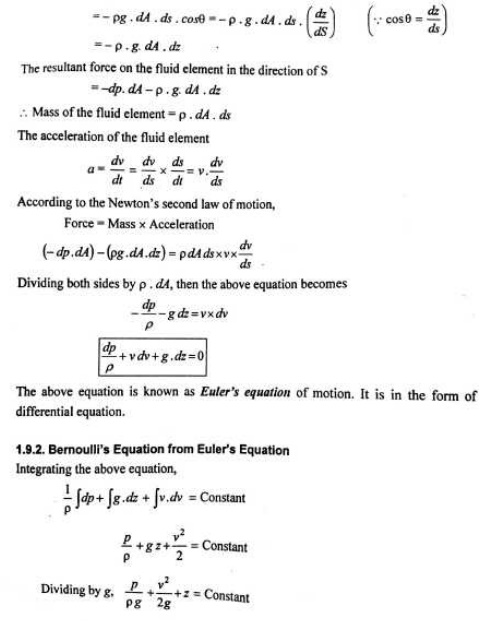

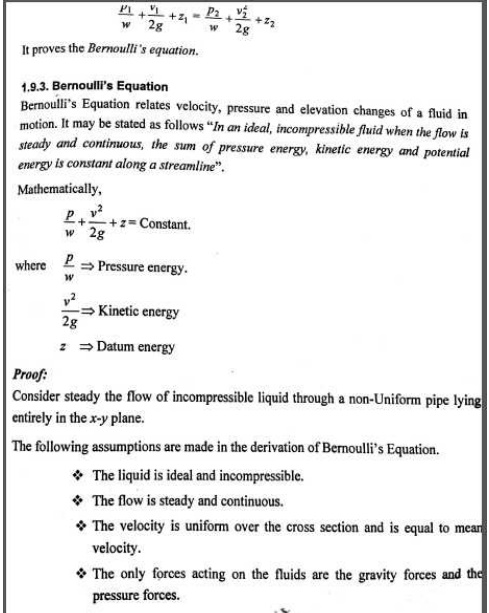

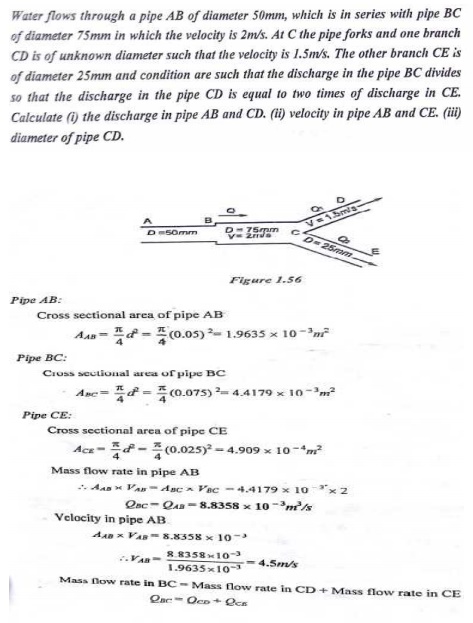
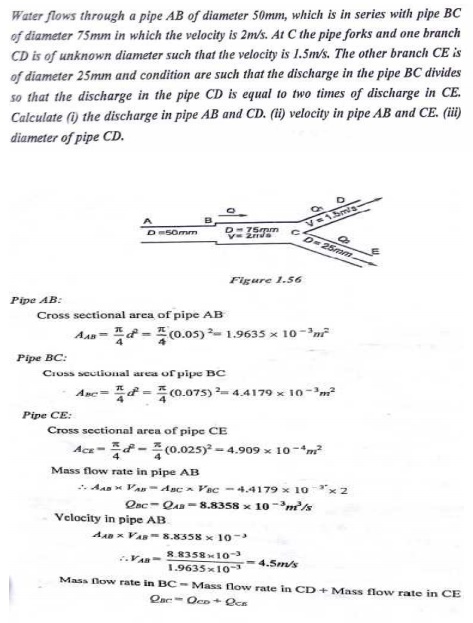
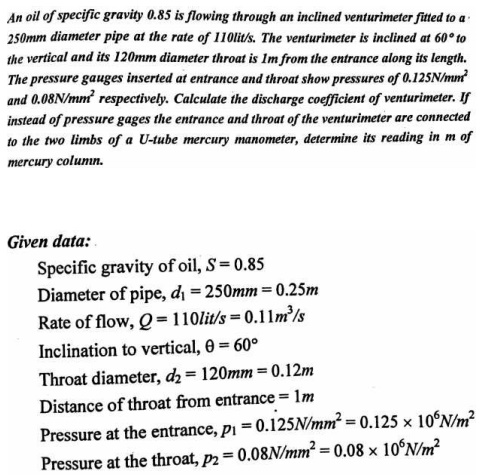
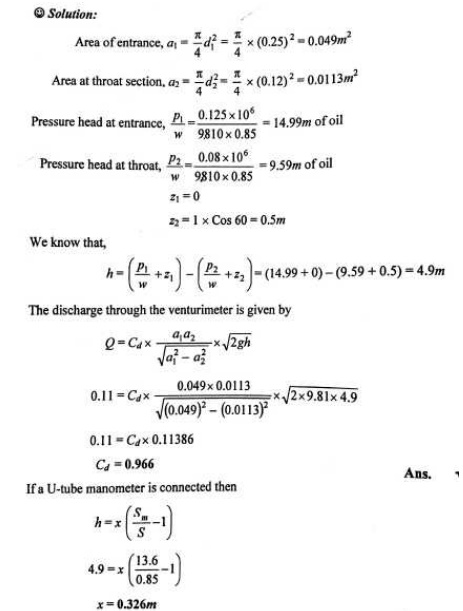

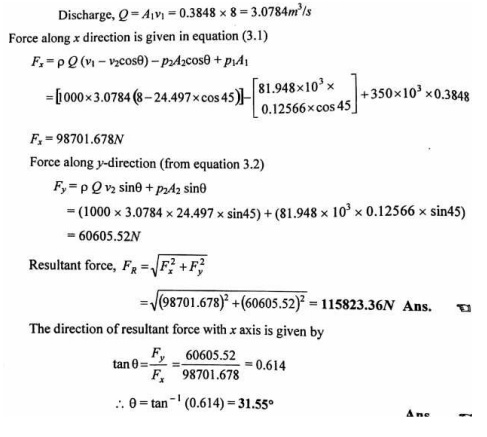
Related Topics